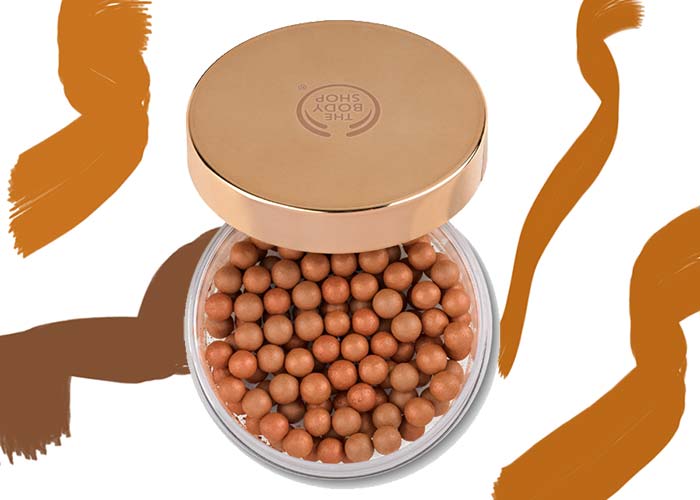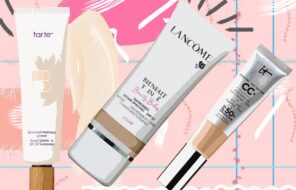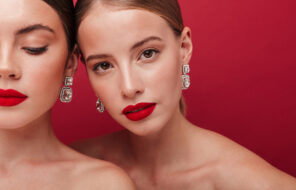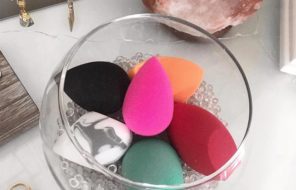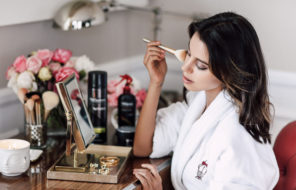Bronzer comes in several forms, each with unique perks and potential pitfalls. Choosing the correct type of bronzer for you depends on your skin type, makeup skills, and preferred levels of convenience and coverage. From powder to cream to liquid, learn about these different types of bronzers so you can pick the best one(s) for you.
Pressed powder bronzer
This is the classic bronzer choice. A pressed powder is easy to carry and apply (though pressed powders always run the risk of crumbling, which can get messy).
Pressed powder bronzers should be applied lightly and blended well, or you risk having your makeup look muddy. One of the best ways to apply this type of bronzer, especially for beginners, is with a large, fluffy makeup brush.
Swirl the brush on the surface of the powder, lightly tap off any excess, and dust the brush across the high points of your face, like your cheeks, forehead, and nose. Then, blend the bronzer into other areas of your face for a natural, gorgeous glow.
Pressed powders are especially apt for beginners because they make it easy to control how much product you pick up. They’re also ideal for those with oily skin.
Loose powder bronzer
There are more similarities than differences between loose and pressed powder bronzers. Both are good for oily skin and matte makeup looks. The main difference is that loose powder is a little tougher to use on the go because its grains are loose and therefore messier. The texture is similar to flour, and if you’ve done any baking, you know how easily flour ends up everywhere.
One perk to loose powder bronzer is that you may be able to pick up more product at once. If you’re looking for a quick way to add all-over warmth to your face, loose powder may be it.
However much you decide to use, applying loose powder bronzer is almost the same as applying pressed powder. Use a large powder brush to dip into the powder, tap off the excess, and gently apply the bronzer to your face.
Loose powders are best for people with oily skin who want the ability to pick up a lot of product at once. They’re also an alternative for those frustrated by a cracked and crumbled pressed powder.
Application Tip: For more control over how much bronzer you use, tap a little bit into the cap of your powder container and dip your brush into the cap rather than the large pile of powder.
Pearl bronzer
These delicate pearls of powder are a luxurious way of applying bronzer. They’re often multi-colored balls of bronzing powder sitting together in a container. As far as comfort and convenience go, pearl bronzers are somewhere between pressed and loose powder and tend to feature more highlighter.
Applying pearl bronzer is very similar to applying pressed powder: Just swirl your brush around the surface of the pearl until you’ve picked up enough product to use on your face. Since they tend to have more shimmer than other bronzers, pearl bronzers are best for those looking for extra brightening or highlighting.
Cream bronzer
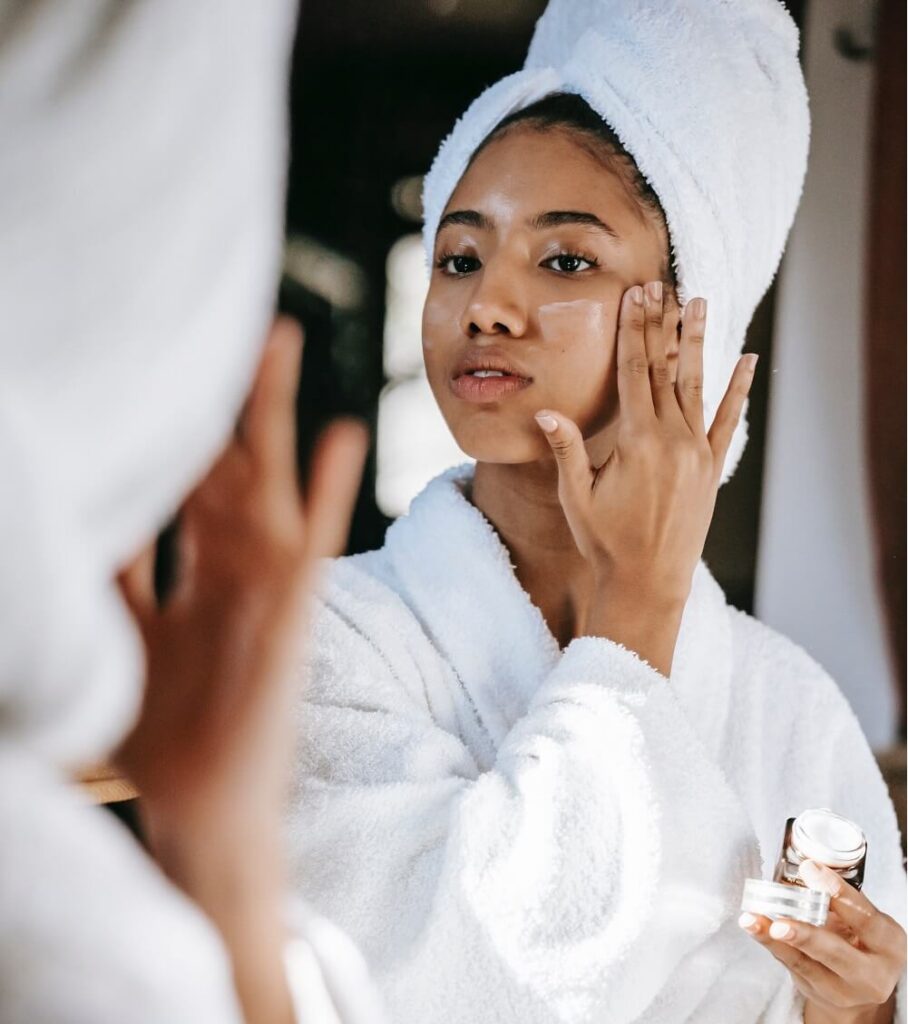
Cream bronzers are less drying than powders, which makes them ideal for dry or mature skin. Cream bronzers are also better for achieving a soft glow, as they tend to blend more seamlessly into the skin. Since they’re best applied before setting powder, cream bronzers — which come in both stick format and jar packaging — always look softer once powdered.
Cream bronzer is also a common contouring tool. When contouring like a pro, you want to apply bronzer to the low points of your face to achieve the illusion of shadows — typically the hollows of the cheeks, jaw, bridge of the nose, and temples.
With a wet texture and several versatile ways to use it, cream bronzer is best for mature and dehydrated skin, as well as those interested in a sculpted, contoured look.
Liquid bronzer
Liquid bronzers have become increasingly popular in recent years, and it’s easy to see the draw. Similar to cream bronzer, liquid bronzer is less drying and perfect for those going for a dewy look. The unique advantage of a liquid is that you can mix it into a moisturizer for all-over bronzing and radiance.
Liquid bronzers often come in bottles with droppers, making it easy to control the amount you disperse. With no brushes or blending required, liquid bronzers are best for beginners and those seeking an ultra-low-maintenance makeup routine.
Choosing from a bounty of bronzer types
Bronzer can be tricky to get right, as it’s easy to overdo things and end up looking orange or mismatched with the rest of your skin. When selecting a bronzer, the main factors to consider are your skin type and preferred application tools.
If your skin tends to be dry, try a cream or liquid bronzer. If you’d like some extra oil control, consider a powder. If your fingers or a beauty blender is your tool of choice, cream or liquid bronzer may be the right call, while powder may suit those who like brushes.
Last but not least, if you’re starting with no tools and a pretty balanced skin type, creams and liquids are blendable, more forgiving types of bronzers.

